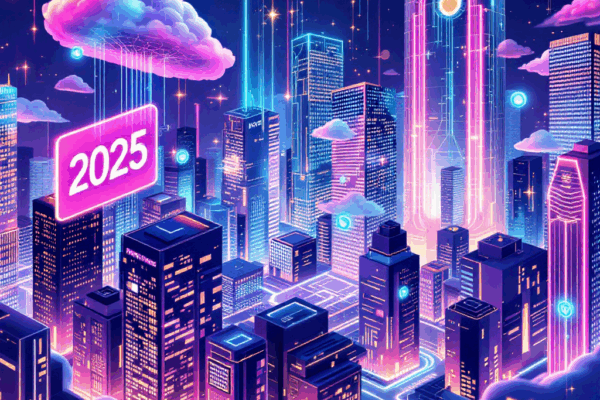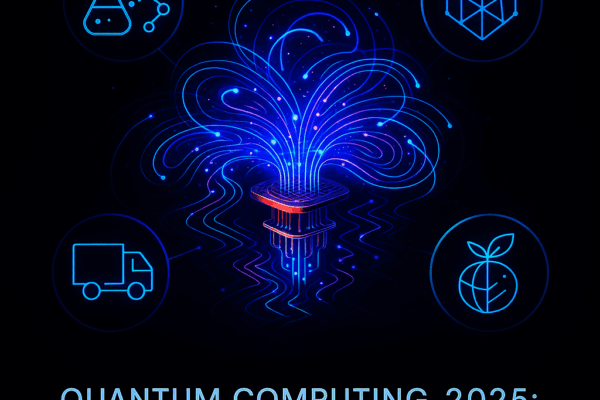An Era Where Miracles Are Made with Words Alone: The Birth of Vibe Coding
“Creating new services without writing a single line of code?” In 2025, a new ‘Vibe’ of development has arrived. Now, developers build complex applications with just one line of English. What exactly is this astonishing paradigm all about?
Vibe Coding is revolutionizing the world of development. It goes beyond simple code auto-completion tools or chatbot-style coding assistance; it represents a completely new dimension of development. At its core, Vibe Coding allows developers to describe their desired outcomes in natural language, and AI precisely grasps their intent, transforming it into fully functional code.
This innovative approach features the following key aspects:
Natural Language-Based Development: Complex web applications can be built from simple sentences like, “Create a dashboard that analyzes GitHub repositories.”
Real-Time Collaboration with AI: The AI instantly implements the developer’s ideas into code, enabling continuous feedback and refinement throughout the process.
Quantum Leap in Abstraction Levels: Instead of low-level code writing, developers focus on high-level system design and business logic.
Breaking Down Tech Stack Barriers: Even without full-stack development experience, complex systems can be constructed with AI’s help.
Vibe Coding goes beyond merely reducing coding time; it redefines the developer’s role and the entire software development process. Developers can now dedicate more time to creative problem-solving and implementing innovative ideas rather than painstaking code details.
This transformation maximizes productivity while narrowing the technology gap, offering more people the chance to engage in software development. With Vibe Coding’s arrival, we are witnessing a paradigm shift from “writing code” to “designing software.”
This revolutionary change is becoming reality faster than we imagine. Vibe Coding is not just a trend—it is the driving force redefining the future of software development. At the heart of the new era we are entering, Vibe Coding stands tall.
Natural Language Is Code! The Core Theory and Principles of Vibe Coding
Have you ever imagined, “What if AI controlled your IDE?” Vibe Coding makes this imagination a reality. Let’s uncover the secret behind this revolutionary technology that generates actual code solely from natural language descriptions—your thoughts and intentions.
The Essence of Vibe Coding: From Natural Language to Code
The standout feature of Vibe Coding is its ability to transform a developer’s natural language explanations into working code. This goes far beyond simple autocomplete. For example, just by saying, “Implement user authentication,” the AI can generate all the necessary code.
MCP: The Perfect Harmony Between AI and Development Tools
Model Context Protocol (MCP) is one of the core technologies behind Vibe Coding. Through MCP, AI can directly control IDEs and other development tools. This means AI does more than just suggest code—it actively manipulates the development environment. Tools like the Cursor IDE interact with AI in real time via MCP, instantly executing the developer’s intent.
Context-Aware Development: Smarter Code Generation
Another key element of Vibe Coding is context-aware development. The AI analyzes the entire project’s codebase, documentation, and even the coding style of the team. This enables the generation of code that doesn’t just meet syntax requirements but fits perfectly within the project’s context.
Real-Time AI Collaboration: A New Partner for Developers
In the Vibe Coding environment, AI acts not as a mere tool but as a real-time collaborative partner. As developers write code, the AI continuously offers suggestions, identifies potential bugs, and proposes optimizations. It’s like having an experienced senior developer offering live advice right by your side.
How Vibe Coding Differs from Traditional Autocomplete
Vibe Coding is fundamentally different from traditional code autocomplete:
- Scope: While autocomplete is limited to a single line or small blocks of code, Vibe Coding can generate entire features or modules.
- Understanding: Autocomplete relies primarily on syntactic patterns, whereas Vibe Coding deeply understands the developer’s intentions and the project’s context.
- Interaction: Autocomplete offers passive suggestions, but Vibe Coding engages actively in dialogue with developers to evolve the code.
Vibe Coding is transforming the paradigm of software development. Developers can now focus more on what to create, rather than how to code it. This marks a revolutionary leap in productivity and simultaneously calls for redefining the developer’s role and skill set. In the era of Vibe Coding, what kind of developer will you become?
Vibe Coding Practical Introduction: Real Tools and Success Stories
Hundreds of thousands of developers have chosen Cursor IDE, Replit, Augment, GitHub Copilot… How have these revolutionary tools made vibe coding a reality? And the astonishing story of a beginner developer building a large-scale service in just 3 days with AI — let’s dive right into the forefront of modern development.
Core Tools of Vibe Coding
- Cursor IDE: The Pioneer of Vibe Coding
- Seamless integration with Claude AI
- MCP (Model Context Protocol) support allowing AI to directly control the IDE
- Real-time code generation and refactoring capabilities
- Replit: Web-Based Vibe Coding Environment
- Development environment ready to launch instantly in your browser
- AI-powered code completion and optimization
- Real-time collaboration features perfect for team projects
- Augment: Enterprise-Grade Vibe Coding Solution
- SOC 2 Type II certification ensures worry-free security
- Analyzes team codebases and documentation to deliver tailored suggestions
- Stable performance guaranteed even in large-scale projects
- GitHub Copilot: The Realization of AI Pair Programming
- Precise suggestions based on extensive open-source codebases
- Supports real-time bug fixes and code optimization
- Perfect integration with the GitHub environment
Vibe Coding Success Story: Developing GitHub Insight SAAS in Just 3 Days
Let’s explore the real power of vibe coding through the amazing experience of a beginner developer:
- Project Overview
- Goal: Build a GitHub repository analysis service
- Tools used: Cursor IDE, Claude AI
- Development time: Only 3 days
- Vibe Coding Process
- Describe requirements in natural language: “Create a dashboard visualizing commit frequency, contributor analysis, and code quality metrics using the GitHub API”
- AI generates core logic: Backend APIs, data processing logic, frontend components automatically created
- Developer’s role: Verify generated code, fine-tune as needed, improve design
- Stunning Results
- Delivered a high-quality SaaS service without full-stack experience
- Implemented complex features like API integration, data visualization, and user authentication
- Cut development time by 90% compared to typical methods
This case proves vibe coding delivers far more than just code generation. It rapidly turns developers’ ideas into reality, lowers complex technical barriers, and accelerates innovation — that’s the true essence of vibe coding.
Vibe Coding Tool Selection Guide
Choose the right vibe coding tool based on your project needs:
- Personal projects/learning: Replit — quick start and ease of use
- Team projects/startups: Cursor IDE — powerful AI integration and collaboration features
- Large-scale enterprises: Augment — security and scalability guaranteed
- Open source contributions: GitHub Copilot — flawless integration with existing GitHub workflows
Vibe coding isn’t just a trend — it’s the future of development. Harness these revolutionary tools to maximize your productivity and create more creative, innovative solutions through AI collaboration. Ready to jump into the world of vibe coding?
Entrusting My Code to AI? The Controversies and Challenges of Vibe Coding
“Who takes responsibility if AI makes a mistake?” “Could my source code be exposed externally?” Behind every new paradigm, shadows inevitably follow. With the emergence of the revolutionary development approach called Vibe Coding, developers, startups, and the industry at large face a variety of concerns and challenges. Let’s explore the core issues at the heart of these controversies and seek ways to overcome them.
1. AI Dependence and Ambiguity of Accountability
At the core of Vibe Coding lies AI interpreting developers’ intentions and generating code accordingly. However, when AI makes errors or produces faulty code, the question of responsibility becomes unclear.
- Issue: Who is held accountable for bugs or security vulnerabilities in AI-generated code?
- Solutions:
- Implement rigorous verification processes for AI-generated code
- Clarify roles between AI and developers: AI as an assistant, with final responsibility on the developer
- Ensure AI model transparency and strengthen explainability of outputs
2. Data Security and Intellectual Property Concerns
During Vibe Coding, sensitive corporate information or personal data risk being exposed to AI models. Additionally, the question of copyright ownership for AI-generated code presents a new challenge.
- Issue: Risks of confidential data leaks and uncertainty over AI-generated code copyright
- Solutions:
- Establish strict data encryption and access control policies
- Adopt on-premise AI solutions to minimize data leakage risks
- Define clear licensing policies for AI-generated code
3. Fears of Developer Skill Atrophy
There is concern that as Vibe Coding becomes widespread, traditional coding skills may diminish in importance, potentially leading to a decline in developers’ foundational capabilities over time.
- Issue: Decline in basic coding skills and algorithmic understanding
- Solutions:
- Strengthen training programs focused on new competencies for collaborating with AI
- Develop curricula emphasizing problem-solving and system design skills
- Cultivate critical thinking to understand and complement AI’s limitations
4. Technological Gaps and Accessibility Issues
Vibe Coding tools powered by cutting-edge AI often demand high-performance hardware and costly subscriptions, creating entry barriers for small companies and individual developers.
- Issue: Widening technology gaps, weakening competitiveness of SMEs and solo developers
- Solutions:
- Promote development and distribution of open-source Vibe Coding tools
- Offer affordable, cloud-based solutions
- Expand government-led AI development support programs
Vibe Coding stands as an innovative technology poised to dramatically boost development productivity. Yet for this innovation to settle securely into practice, the aforementioned challenges must be addressed. It is now a crucial moment for developers, businesses, and policymakers to collaborate in maximizing the benefits of Vibe Coding while minimizing its downsides.
The End of Code? The Future Unveiled by Vibe Coding
Will the era of development without typing finally arrive? As the boundaries between tools and AI blur, a new age dawns where the role of developers is completely redefined. We reveal a must-read future scenario for every technologist, unveiling the essence of the imminent ‘coding revolution’ and how to prepare for it.
Vibe Coding: A New Paradigm in Development
Vibe coding is a revolutionary development approach that goes far beyond simple code auto-completion. When developers describe desired functionality in natural language, AI comprehends and translates it into actual code. This fundamentally transforms the development process.
- Natural Language-Based Development: Implement complex features with simple commands like “Add user authentication.”
- Context Awareness: AI understands the entire project context and generates code consistent with the existing codebase.
- Real-Time Collaboration: Developers and AI interact instantly, enabling immediate feedback and revisions.
The Practical Impact of Vibe Coding
Vibe coding has already proven its effectiveness in real projects. As seen in GitHub Insight SAAS development, even developers without full-stack experience can build complex services in a short time. This lowers the barrier to entry and dramatically accelerates the pace of idea realization.
The Future Developer: From Code Writer to Problem Solver
The advent of vibe coding is expected to significantly change the developer’s role:
- Enhanced Abstract Thinking: Focus shifts from code level to system architecture and business logic.
- AI Collaboration Expert: The ability to effectively utilize AI tools and validate outcomes becomes essential.
- Creative Problem Solving: Explaining complex business requirements in ways that AI can understand gains importance.
Preparing for the Vibe Coding Era
To adapt to this new paradigm, developers need to prepare as follows:
- Understanding Natural Language Processing: Learn the fundamentals of NLP for effective communication with AI.
- Strengthening System Design Skills: Cultivate architectural design skills to see the bigger picture.
- AI Ethics and Security: Develop capabilities to manage ethical considerations and security risks related to AI use.
Vibe coding is redefining the future of development. A new era is unfolding where the burden of writing code gives way to focusing on more creative and innovative solutions. Those who adapt and lead this change will become the key players in the future technology industry. Now is the time to ride the wave of vibe coding.




